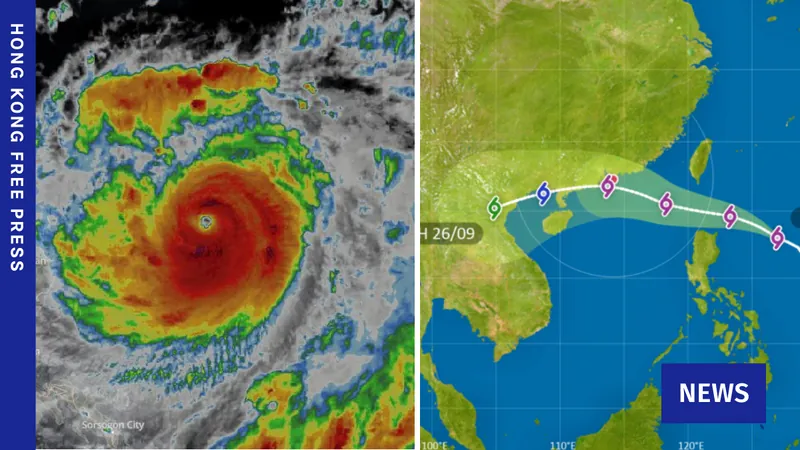
Brace Yourselves: Typhoon Ragasa to Slam Hong Kong with Fury
2025-09-21
Author: Jessica Wong
Storm Warning: Prepare for Devastation
Typhoon Ragasa is on a collision course with Hong Kong, prompting urgent warnings from the Hong Kong Observatory (HKO) for residents to brace for high winds, severe flooding, and dangerously elevated sea levels expected mid-next week.
Impending Chaos: What to Expect
Following a scorching Monday, heavy rain and thunderstorms will pummel the region, bringing the risk of catastrophic storm surges. The HKO cautions that coastal sea levels may reach heights similar to the disastrous floods caused by Typhoon Hato in 2017 and Typhoon Mangkhut in 2018.
Storm Intensification: Super Typhoon Status
Ragasa is rapidly intensifying, aiming to traverse the Luzon Strait and enter the northern South China Sea, hitting Hong Kong by Wednesday. Predictions indicate the storm could reach super typhoon status, characterized by wind speeds of up to 220 km/h.
T10 Alert: What It Means for Residents
Should the HKO issue a T10 signal—its highest storm warning—on Wednesday, it will signal extremely dangerous hurricane-force winds. Residents are urged to stay indoors, secure their windows, and abstain from traveling.
Preparation and Safety Measures
Authorities plan to open temporary shelters for those without safe refuge, while all schools and government services will suspend operations. Although bus and ferry services will halt, some underground MTR lines may remain operational depending on conditions.
Surviving the Eye of the Storm
There may be a brief calm if the eye of the storm directly crosses Hong Kong, but the HKO warns that this is often followed by a fierce resurgence of winds. Those in safe locations are advised to remain where they are.
Historical Context: The Cost of Typhoons
In 2017, Typhoon Hato left 12 dead and caused massive flooding and destruction across South China. Meanwhile, Typhoon Mangkhut in 2018 was the worst storm in decades, stranding travelers and causing billions in damage.
A Growing Threat: Climate Change and Typhoons
As ocean temperatures rise due to climate change, storms like Ragasa are becoming increasingly potent. NASA reports that over 90% of the excess heat from greenhouse gases is being absorbed by our oceans, contributing to this alarming trend.


 Brasil (PT)
Brasil (PT)
 Canada (EN)
Canada (EN)
 Chile (ES)
Chile (ES)
 Česko (CS)
Česko (CS)
 대한민국 (KO)
대한민국 (KO)
 España (ES)
España (ES)
 France (FR)
France (FR)
 Hong Kong (EN)
Hong Kong (EN)
 Italia (IT)
Italia (IT)
 日本 (JA)
日本 (JA)
 Magyarország (HU)
Magyarország (HU)
 Norge (NO)
Norge (NO)
 Polska (PL)
Polska (PL)
 Schweiz (DE)
Schweiz (DE)
 Singapore (EN)
Singapore (EN)
 Sverige (SV)
Sverige (SV)
 Suomi (FI)
Suomi (FI)
 Türkiye (TR)
Türkiye (TR)
 الإمارات العربية المتحدة (AR)
الإمارات العربية المتحدة (AR)